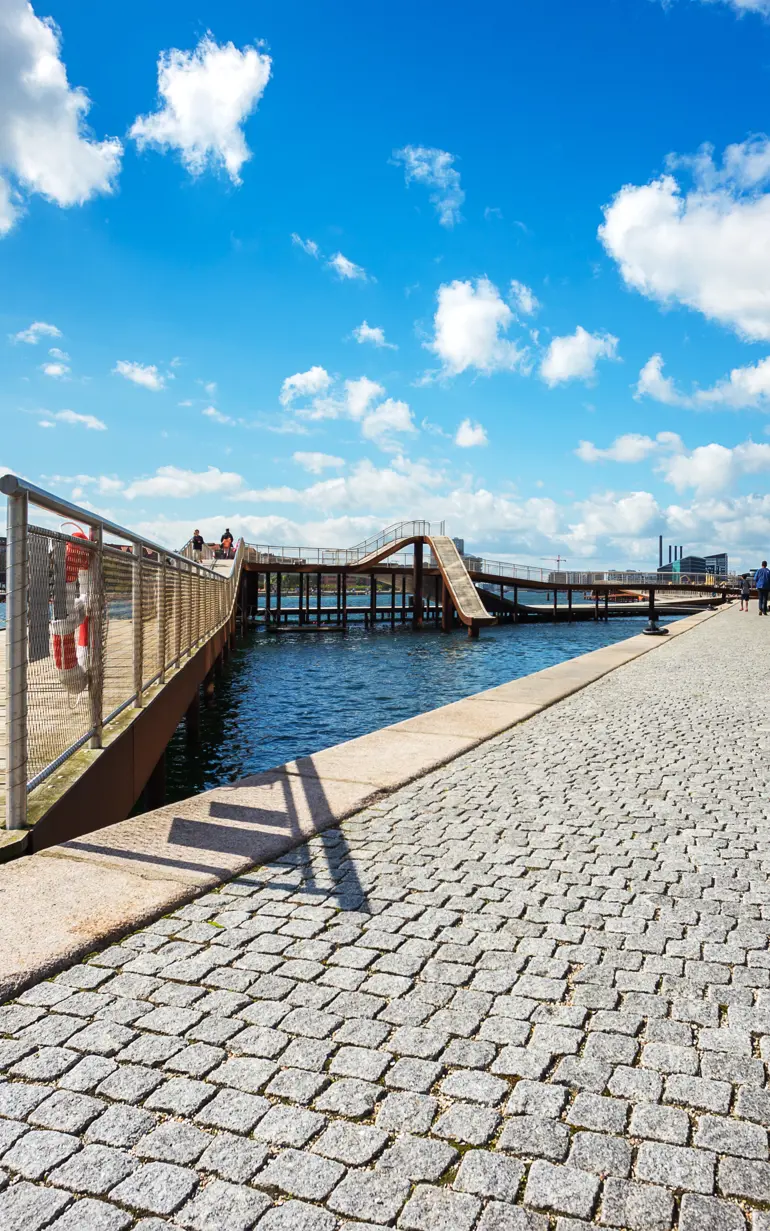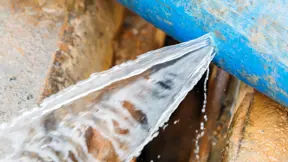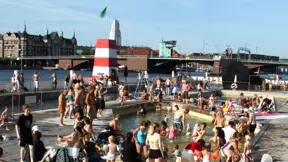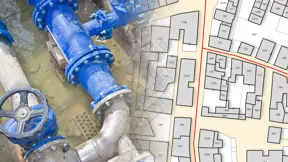
Optimising Kalvebod Brygge cloudburst pumping station
Physical scale model tests help validate the safety and performance to improve flood management in Copenhagen
To handle extreme cloudburst rainfall events and prevent flooding, a cloudburst water management plan was established for the city of Copenhagen, Denmark. As part of the plan, the city’s water utility, HOFOR, will construct the Kalvebod Brygge cloudburst tunnel and pumping station. DHI created a physical model of the pumping station to validate its safety and performance before construction started, confidence that the tunnel design would work at full scale.
Challenge
The Kalvebod pumping station, a key element in the new tunnel system, will be built at the Copenhagen harbourfront at Kalvebod Brygge. When the tunnel reaches Kalvebod Brygge, it will be approximately 20 m below ground level. To discharge the cloudburst water into the harbour via an overflow structure, the pumping station will lift the water up to ground level, and from here it will flow into the harbour.
The pumping station’s layout is based on a semi-circle geometry with the tunnel inlet on one side, and six propeller pumps with vertical column pipes and bell mouth inlets distributed around the half-circle well above the inlet. The diameter of the circular pump house will be 17.5 m and the height of the pump house will be about 20 m from the bottom to the ground level at Kalvebod Brygge. The pumps will each have a rated capacity of 5.1 m3/s. With four pumps in operation at the time (and two in reserve), the total capacity will be 20.4 m3/s.
Our client Grundfos A/S will deliver the six pumps for which they have also designed the bell mouth inlet and will deliver the column pipes. As part of this deliverable, Grundfos A/S has the responsibility to validate and optimise the hydraulic performance of the pumping station. To ensure the pumping station’s efficiency, DHI was contracted to carry out hydraulic assessments and physical scale model tests.
Solution
To ensure safe and efficient hydraulic function and performance under all operating conditions, the pumping station physical scale model was put through an intensive and comprehensive test campaign at the model test facilities at DHI’s headquarters in Hørsholm, Denmark. The model tests were carried out in close collaboration with our client who contributed greatly to the project’s development and successful execution. In addition, both HOFOR and HOFOR’s consulting team consisting of NIRAS A/S and Jacobs followed the project closely.
The model of the pumping station was designed and built at a scale of 1:11.81. The model was manufactured for complete transparency in acrylic glass, which gave maximum freedom for observing any flow features in the model. It was instrumental to measure the rotation of the water and the velocity distribution inside the vertical pumping pipes, vertical velocity profiles in the main pump chamber, water level variations in the pump chamber, and flow rates in each pump, as well as flow visualisations to document the flow patterns.
During the test campaign, modifications were introduced to the layout of the interior of the pump chamber to improve the hydraulic performance. This included baffle columns, which are vertical columns that slow down the flow and dissipate energy as water enters the pump chamber. Here, a calm and well-distributed flow is achieved in the pump chamber, which ensured that all evaluation parameters were well within the acceptable limits according to international guidelines.
For this project, DHI made use of our expertise in physical scale model tests of hydraulic structures and pumping stations. At our model test facilities, we perform tests with pumping stations in a dedicated test bench, making sure all equipment is in place for a full hydraulic assessment, forming the basis for verification against relevant standards. Where needed, detailed numerical CFD simulations can be performed, which is often a valuable approach in combination with physical model tests.
Client:
Location:
Denmark
Related SDGs:
SDG 9: Build resilient infrastructure, promote inclusive and sustainable industrialization and foster innovation
SDG 11: Make cities and human settlements inclusive, safe, resilient and sustainable
SDG 13: Take urgent action to combat climate change and its impacts
Results
DHI’s physical model tests helped Grundfos A/S verify the safety and hydraulic function of the Kalvebod Brygge pumping station under all operating conditions. With confidence from the tests and subsequent optimisations, HOFOR was fully confident that the design would work at full scale.
- Improved hydraulic performance
- Validated the safety and efficiency of the basic design of the pumping station
- Helped the client meet all international guidelines
‘The DHI team responded to our request for physical scale model tests with a technical high-quality proposal. They managed to carry out a complex model build and instrumentation of the pumping station model and provided detailed and continuous feedback on performance during fabrication, instrumentation and testing.’
Jens Bjerritsgaard, Head of Project Department
Karl Norbert Kiniger, Application Manager
Grundfos A/S
‘HOFOR and our consultant NIRAS found it necessary to have the untraditional and extreme design verified before initiating the construction. In addition to CFD simulations, a scale model test was specified. HOFOR is very satisfied with the way the model was built, and with the tests conducted by DHI and Grundfos. The tests resulted in some optimisations and finally in a satisfying result. HOFOR is now fully confident the design will work in full scale. The cooperation has been excellent and the delivery was on time.’
Niels Eriksen, Chief Consultant
HOFOR
About our client
Grundfos has a global presence and is a full range supplier within pumps for heating, air conditioning, irrigation, industry, groundwater, boosting and water treatment. Know more about the Kalvebod Cloud Burst tunnel project here.
You may also like
How can we help?
With our global network of offices, we make sure you get the right answers to your local needs. Tell us about your water challenges and we will get back to you.


